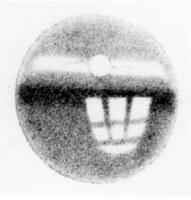Journal of Wilhelm Kuhne
Date of entry 27th November 1880
I stared at my desk and it stared back. I had to work quickly and efficiently otherwise the flesh would start to rot. I really couldn’t have the neighbours complaining again.
When I woke this morning I knew that today would be a day of great scientific discovery, a day that would mark Optography as the finding of the century. I hailed a coach to the sleepy town of Bruchsal, in wait of the day’s events. As I arrived a crowd was already beginning to form, children jostling for their place at the front. I stayed towards the back, but remained vigilant, keeping my line of sight clear above the heads of the burgeoning crowd. Eventually movement began to occur off the side of the central stage, and a quiet fell over the audience. The show was about to begin.
A man, by the name of Ernard Rief, was lead solemnly by two guards up the steps towards the swinging rope of the noose, his head covered by a hessian sack. It muffled the sounds of blood curdling cries, that echoed with a somber futility; only to be met with cheers of enjoyment. I returned later that day once I had obtained the materials I needed, and as luck would have it a thick fog lay over the streets of Germany that evening which lessened my worries of arousing suspicion.
I carefully prepared a vial of my revolutionary potion, that would allow the living to observe the memories of the dead. Once this serum was applied to the eyes of the deceased, an image would emerge of their last living experience. Mr. Reif’s head lay so motionless, that one could assume he was sleeping, his body lying bruised and still on my counter top.
An incision just below the left eye socket and a drain of the Supraorbital artery would allow for easy extraction of the materials that I required. Although I am sure of my theory, the demon of doubt still plagued my mind. I sat a while longer, before I made the first cut. I now work quickly and with vigor, and with a short sharp tug the optic is released from its socket and lies blood soaked in my hand. The body made a sudden jolt, of which I can only assume is an extreme cadaveric spasm, and then shortly subsides, somehow paler than before.
I administer a drop of the ointment to the eye, and stare into the shining bulbous sphere. To my adulation an image began to form, blurred at first but growing ever more clear as the seconds past. That was when my heart stopped for a moment, and horror washed over my body. In the eye I saw a version of myself, but not as I was in the present, as I had been just moments before. I saw in my hands a scalpel not yet bloodied, slowly inching forwards, and with a force that made me jump, the image went black.
It’s such a shame that a body paralyzed looks so much like a dead one.
I have another execution booked for next week, this time a guillotine, maybe I will have more luck then.
Changes I have made based on feedback:
In this version of the story I have kept the same character and scenario but hopefully made it clearer what is happening, and I spent less time focusing on the flash back and looked more into the present. I also changed the story to make it a bit more interesting (although not really historically accurate), so I changed it from a guillotine to a handgun exception, in order to change the ending so that the man is actually alive when the scientist performs his experiment on him. I tired to keep the same sense of voice and add a bit more subtlety to what he is saying. I think having it as a journal entry relates more to the time period and makes it clearer the time setting. I tried to include some references from Jekyll and Hyde to keep it relevant, such as the ‘mad scientist’ trope and the dingy, foggy Victorian London (although my story is set in Germany).








